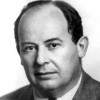If you look at automata which have been built by men or which exist in nature you will very frequently notice that their structure is controlled to a much larger extent by the manner in which they might fail and by the (more or less effective) precautionary measures which have been taken against their failure. And to say that they are precautions against failure is to overstate the case, to use an optimistic terminology which is completely alien to the subject. Rather than precautions against failure, they are arrangements by which it is attempted to achieve a state where at least a majority of all failures will not be lethal. There can be no question of eliminating failures or of completely paralyzing the effects of failures. All we can try to do is to arrange an automaton so that in the vast majority of failures it can continue to operate. These arrangements give palliatives of failures, not cures. Most of the arrangements of artificial and natural automata and the principles involved therein are of this sort.
John von Neumann (1903-1957) Hungarian-American mathematician, physicist, inventor, polymath [János "Johann" Lajos Neumann]
Theory of Self-Reproducing Automata, Lecture 3 “Statistical Theories of Information”
(Source)

